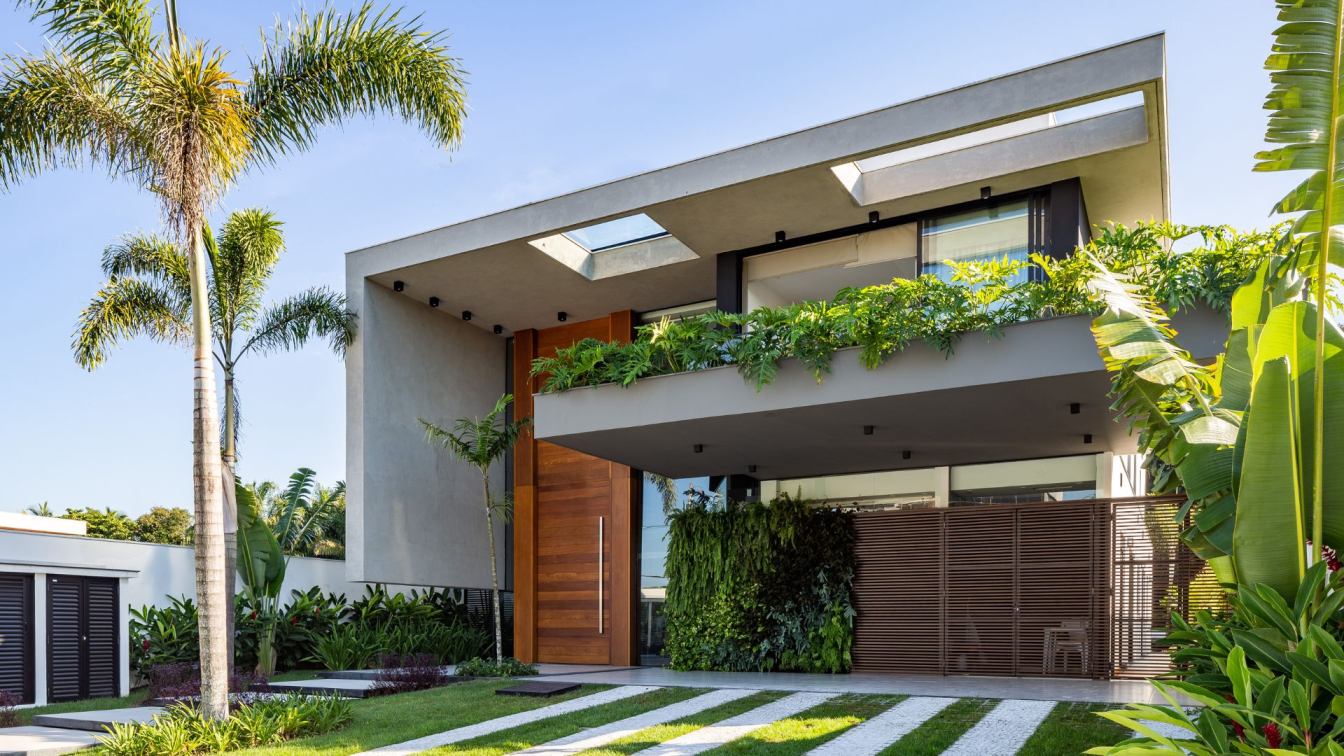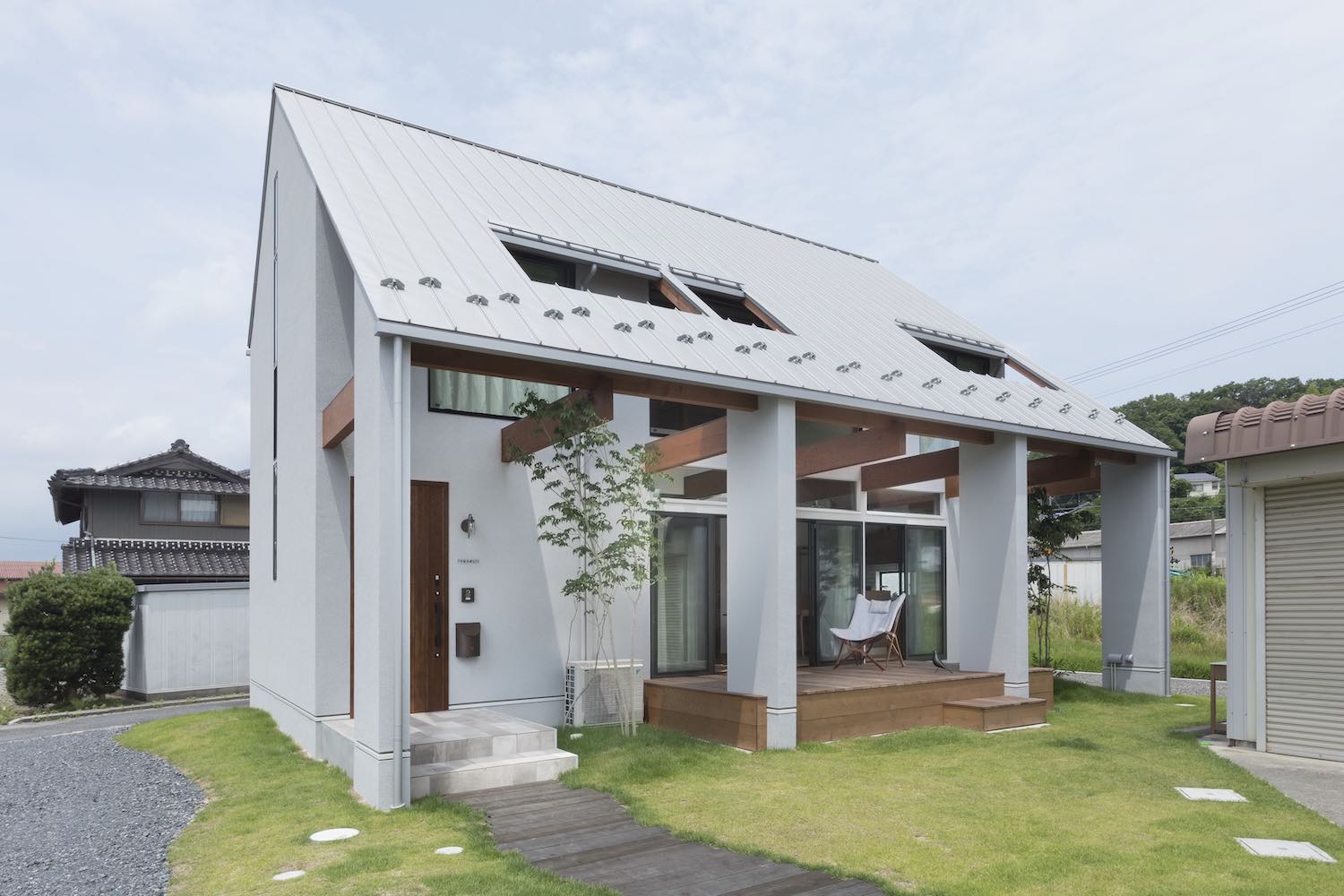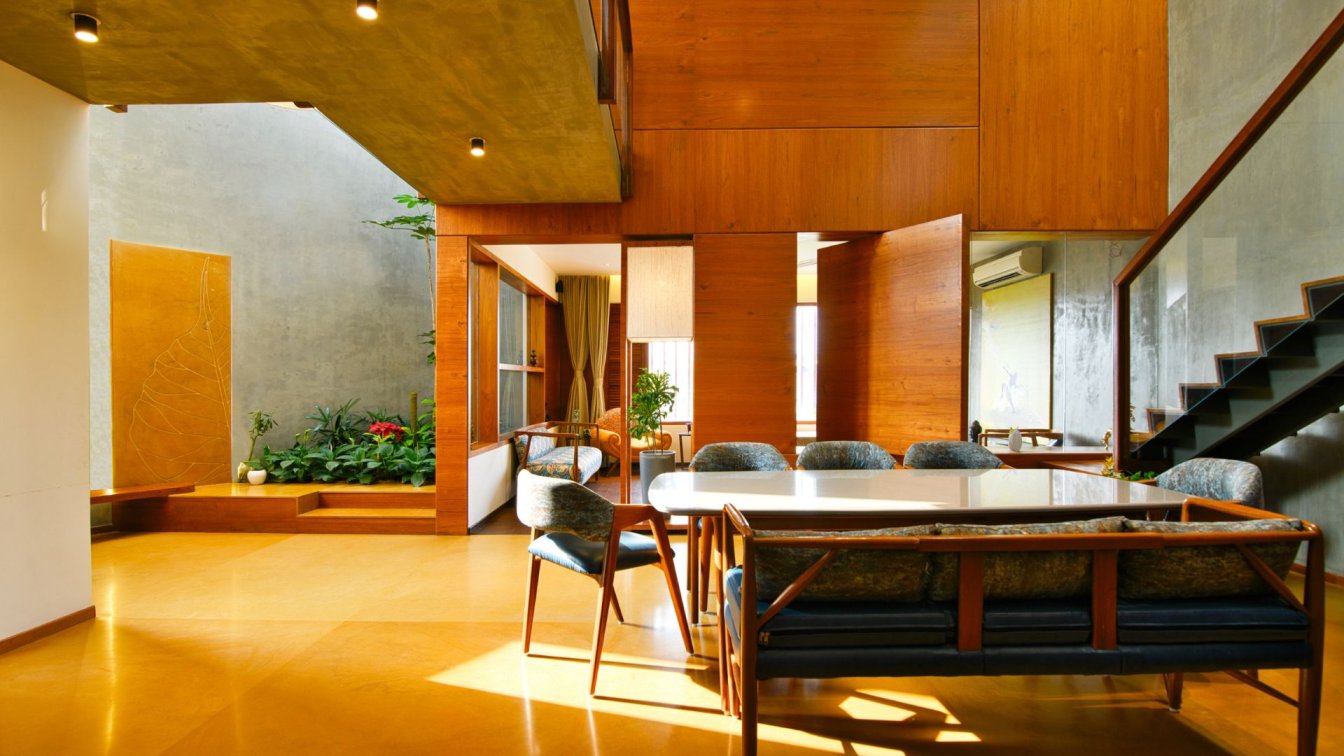The project for the LIU House, located on the Riviera de São Lourenço beach, São Paulo coast, was built with an imposing architectural element on its front face which could provide the view for all the environments, such as the leisure and native forest in the back, from the entrance. The project is signed by the barazilian architeture office, Raiz Arquitetura, from architects and partners Alexandre Ferraz and Elias Souza, who have several high standard houses in the coast and countryside of São Paulo in their portfolio.
The house was designed in a south-north longitudinal axis, with a large open space, high ceilings and a vertical gable that was installed on the west face, blocking the sun's incidence. In this way, we developed the whole social area of the house in an integrated way with the lounge and gourmet space outside. This block, by having a margin with the front setback of the house, allowed the implementation of the leisure program at the end of the lot.
To accommodate the family, this summer house has a suite for the elderly on the first floor, four conventional suites, and a master suite upstairs. The home and kitchen areas can operate either separately or integrated with the social area of the house through sliding panels.

In the background, the glass frame in the dining area also allows the transformation of this space into a single room with an outdoor lounge and a gourmet area. All the openings were designed with lighting, sunlight, and cross ventilation in mind, providing better environmental comfort and a pleasant temperature on hot days.
The landscaping of the LIU House not only functions as a frame for the built elements, but also helps to create and integrate the environments, breaking the limits of the fences and becoming a single space. The vertical gardens of the residence are contemplated with automated irrigation through a timer in which they receive the right amount of water during the day, minimizing water consumption.
The lighting of the house sought to enhance the volumetry and the environments. In general, we decided for a layout with discreet moldings and general-purpose light fixtures, favoring the functionality of the illumination, with appropriate intensity for each use and occasional highlights.















































































